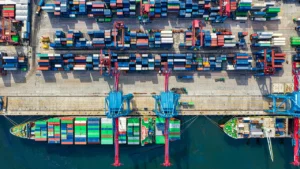Table of Contents
The bioeconomy represents a transformative approach to economic development, leveraging biological resources and innovative technologies to create sustainable solutions. This emerging field integrates principles of biotechnology, sustainability, and circular economy to address global challenges such as climate change, resource depletion, and food security.
Why: The importance of bioeconomy
The bioeconomy is crucial because it addresses pressing environmental and economic challenges. By utilizing renewable biological resources, it reduces dependence on fossil fuels, mitigates greenhouse gas emissions, and promotes sustainable resource use. This approach not only helps in combating climate change but also supports biodiversity and ecosystem health. Furthermore, the bioeconomy fosters economic growth and job creation in new and innovative sectors, contributing to a more resilient and sustainable global economy.
How: Implementing the bioeconomy
Implementing the bioeconomy involves integrating advanced technologies and sustainable practices across various sectors. Key technologies include genetic editing, bioprocessing, and bioprinting, which enable the development of bio-based products and processes. For instance, genetic editing techniques like CRISPR allow for precise modifications in crops, enhancing their resistance to pests and diseases. Bioprocessing uses living cells to produce biofuels, biochemicals, and bioplastics, reducing environmental impacts and improving efficiency. Additionally, the circular economy principles are applied to minimize waste and maximize resource efficiency, such as converting agricultural waste into biogas.
What: Applications and benefits of the bioeconomy
The bioeconomy encompasses a wide range of applications, from agriculture and food production to energy and industrial goods. In agriculture, it includes the production of cultured meat and synthetic dairy products, reducing the environmental footprint of traditional livestock farming. In the energy sector, biofuels derived from biomass offer a renewable alternative to fossil fuels. Industrial applications include the production of bioplastics and bio-based chemicals, which are more sustainable and environmentally friendly than their conventional counterparts. These innovations not only contribute to environmental sustainability but also open up new economic opportunities and markets.
Wrap-up
In summary, the bioeconomy is a vital and dynamic field that leverages biological resources and cutting-edge technologies to create sustainable solutions for global challenges. By addressing the “why,” “how,” and “what” of the bioeconomy, we can better understand its significance and potential. As we continue to innovate and integrate bioeconomic practices, we move closer to a sustainable and resilient future.



